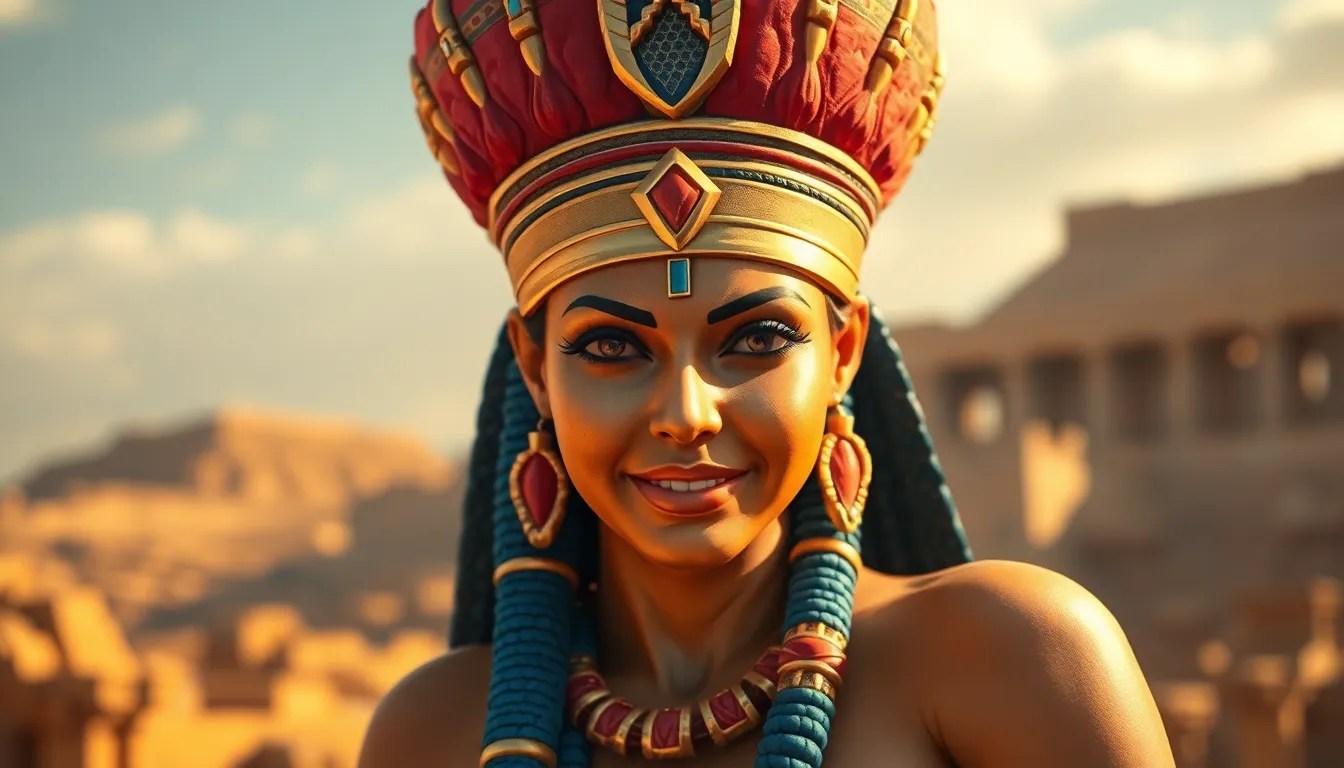The Protective Influence of Hathor: The Goddess of Love and Joy
I. Introduction
Hathor, one of the most revered deities in ancient Egyptian mythology, embodies the essence of love, joy, and motherhood. As a goddess who transcends the realms of emotion and nurturing, she holds a significant place in the hearts of the ancient Egyptians. Love and joy were not merely personal experiences in Egyptian culture; they were vital components of social harmony and community well-being. This article aims to explore the protective influence of Hathor, shedding light on her multifaceted role as a goddess who not only brings happiness but also safeguards her devotees.
II. Historical Context of Hathor
Hathor’s worship has roots that extend deep into the annals of ancient Egyptian history, evolving through various dynasties. Initially, she was associated with the sky and represented as a cow, symbolizing fertility and nourishment. Over time, her characteristics expanded, and she became linked to music, dance, and joy.
- Origins and evolution: Hathor’s worship can be traced back to the early dynastic period, where she was celebrated in temples and festivals.
- Major temples: The Temple of Hathor at Dendera is one of the most famous centers of devotion, showcasing her importance in religious practice.
- Iconography: Hathor is often depicted as a woman with cow horns and a sun disk, symbolizing her celestial nature and nurturing qualities.
III. Symbolism of Love and Joy
Hathor represents the dual nature of love and joy, embodying both the ethereal and the earthly. Her associations with fertility and motherhood are prevalent in various myths and rituals, marking her as a protector of women and children.
- Fertility: Hathor is often invoked during childbirth and fertility rites, ensuring safe deliveries and healthy offspring.
- Music and dance: As a goddess of music, Hathor inspires joyful celebrations, where her worshippers engage in dance and song to express their adoration.
- Role of joy: Joy was integral to ancient Egyptian life, often reflected in their art, music, and rituals, signifying the importance of happiness in maintaining social cohesion.
IV. Hathor as a Protector
Hathor’s protective attributes are deeply woven into her identity as a goddess. She serves as a guardian against evil forces, providing comfort and safety to her followers.
- Protective attributes: Hathor is seen as a source of protection for women and children, often depicted as a nurturing mother figure.
- Myths and stories: Numerous myths illustrate her protective nature, such as the tale of her journey to rescue her son, Horus, from danger.
- Nurturing qualities: Hathor’s essence is imbued with compassion, making her a beloved figure who embodies both strength and gentleness.
V. Rituals and Worship Practices
The worship of Hathor involved various rituals and ceremonies that highlighted her significance in the daily lives of the ancient Egyptians.
- Ceremonies: Festivals dedicated to Hathor often included grand celebrations filled with music, dance, and offerings, celebrating love and joy.
- Offerings: Devotees would present offerings of food, flowers, and incense, seeking her favor and protection.
- Role of music and dance: Music and dance were essential elements of her worship, believed to invoke her presence and bring forth joy in the community.
VI. Hathor’s Influence on Personal Well-being
The psychological aspects of love and joy are crucial for personal well-being. Hathor’s teachings resonate with the idea that embracing love and joy contributes to resilience and mental health.
- Psychological aspects: Love and joy create a protective barrier against negativity, enhancing overall well-being.
- Modern interpretations: In contemporary spirituality, Hathor’s attributes are often invoked for guidance in personal growth and emotional healing.
- Invoking Hathor: Many people find that calling upon Hathor in moments of distress can promote inner peace and resilience.
VII. Contemporary Relevance of Hathor
Hathor’s influence extends beyond ancient history, finding relevance in modern spirituality and goddess worship. As society seeks to reconnect with ancient wisdom, the attributes of Hathor resonate with contemporary values.
- Impact on modern spirituality: Hathor’s archetype as a nurturing and loving goddess is celebrated in various spiritual practices today.
- Resurgence of interest: There is a growing interest in ancient deities, with many individuals exploring their significance in a modern context.
- Resonance with values: Hathor’s embodiment of love, joy, and protection aligns with today’s emphasis on mental health and emotional well-being.
VIII. Conclusion
In conclusion, Hathor’s protective influence is a profound aspect of her identity as the goddess of love and joy. Her nurturing qualities and the celebration of joy in ancient Egyptian culture highlight the importance of these values in both personal and communal life. As we reflect on Hathor’s wisdom, let us embrace the teachings of love and joy, allowing them to guide our modern practices and enhance our well-being. Exploring and honoring Hathor can serve as a reminder of the protective power of love and joy in our lives today.




